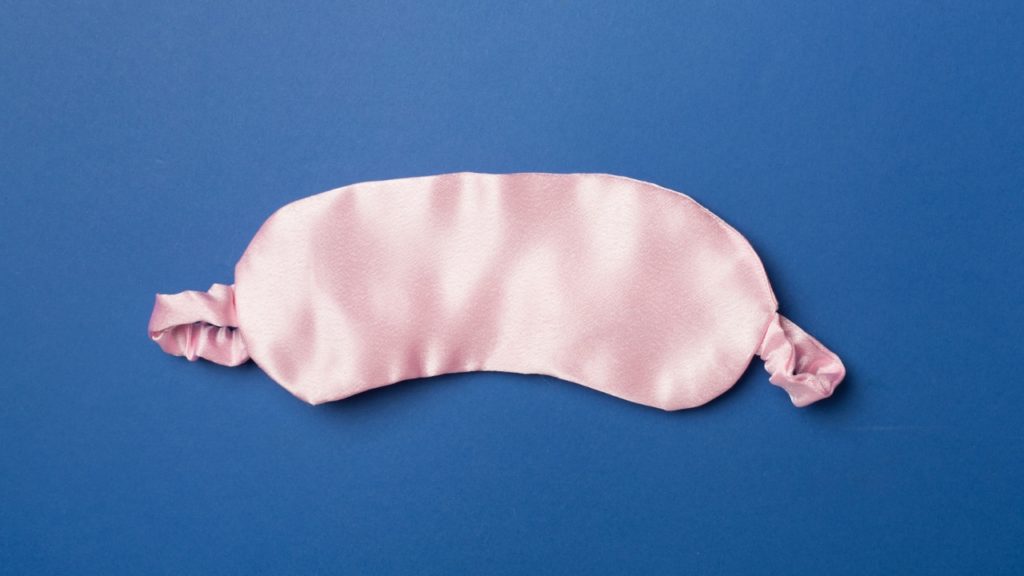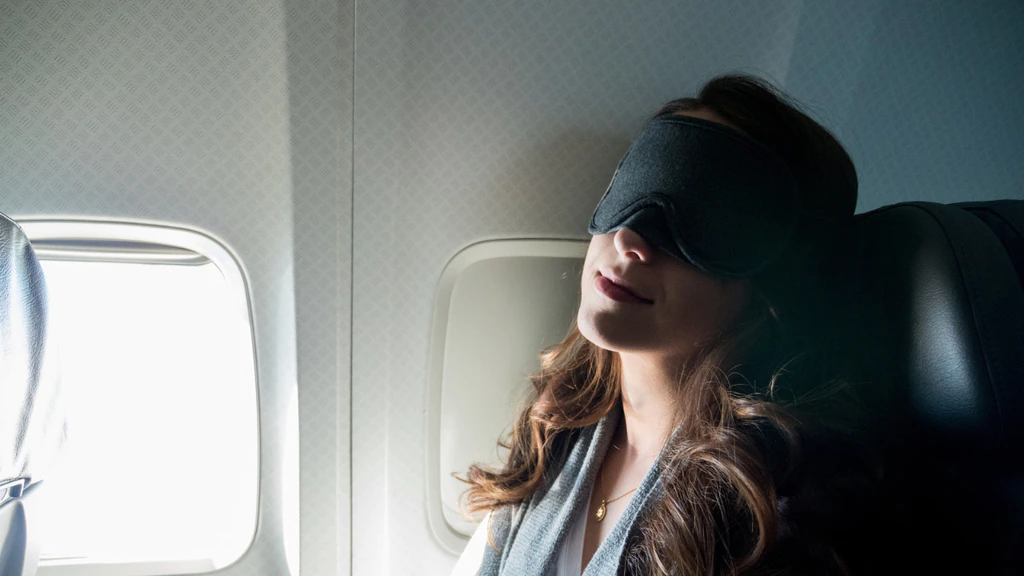Sleep: it’s free. And we all want more of it, so why is it so hard to get? Specifically – that consistent, restorative, uninterrupted, eight-hours-a-night kinda sleep. Which is why we’ve enlisted Sydney-based sleep expert Olivia Arezzolo to solve our myriad of sleep concerns with our Sleep Well Wednesdays series. Check back every fortnight and you’ll be off to the land of nod before you know it.
Sleeping on a plane. It’s probably not the highlight of your trip, let’s be honest. Marred by memories of being squashed, waking every few hours and feeling exhausted when you land, it’s a coveted skill if you can do it well.
Alas, as your resident sleep coach, it’s a pleasure to share tips and tricks you need to know, so you can get the sleep you need, and arrive at your destination feeling refreshed, revived and ready to go. Here are my seven steps to getting a good night’s sleep on a plane.
1. Bring a Book
I know it’s tempting to watch episode after episode of inflight entertainment, but the principles of my bedtime routine still apply – before sleep, you need 1 hour of tech free time. Prepare accordingly and bring your favourite book, or a journal where you can map out the best parts of your trip – like where you’re staying, what you’re most excited about, and who you’ll see.
2. Bring a quality eye mask
Light is the number one factor to control your melatonin levels, the hormone that makes you sleepy. As such, a 2011 study by Brigham and Women’s Hospital and Harvard Medical School has found regular interior light can compromise it’s production by 50% – limiting sleep depth, efficiency and length. To avoid this, an eye mask is essential. While this can be found in your onboard sleep kit, this may not fit you well. Hence, you may want to bring your own eye mask, such as Dreamlight Ease Lite, designed to fit perfectly after being made by facial mapping technology.

3. Limit sound
Another tool you need in your sleep kit are quality earplugs: a 2012 study by Finnish Institute of Occupational Health found that noise over 55dB increases your likelihood of nonrestorative sleep by 29%. In Perspective, indoor plane sounds are 85 dB – so for quality sleep, this is non-negotiable. Again, while a pair usually comes in your sleep kit, it’s not a one size fits all scenario. Alas, another option is to BYO tried and tested earplugs, like Otifleks Flier Earplugs, available in 2 sizes.
4. Avoid alcohol
I know it’s tempting to help you fall asleep, and to celebrate your long awaited break, but alcohol is not going to help you sleep well. In fact, a 2018 study found even one glass can reduce sleep quality by nine per cent, while two glasses can compromise it by 24 per cent. Worse still, over two glasses impaired sleep by over 39 per cent.
5. Minimise snoring
Although you may not know it, snoring also limits sleep quality – it leads to lighter, less refreshing sleep, and increases the chances you’ll wake up. Given these factors are already more likely when sleeping on a plane, do yourself a favour and take measures to reduce snoring as much as you can. First, avoiding alcohol (a second reason it’s a good idea), and second, use a nasal dilator like Mute Snoring – 75 per cent of users snore less when doing so.

6. Eat smart
Your onboard meals have been designed with flavour and functionality – not sleep. With the view of getting your best sleep, limiting high-sugar foods, such as soft drinks and desserts, is advised. Similarly, high-fat meals like creamy pasta can increase digestion time, which limits sleep quality. Instead, stick to healthier options like fish, cooked veggies; and drink wise, plain h2O.
7. Prepare in advance
Sleeping well on a plane and minimising jetlag doesn’t start the moment you arrive at the airport – it starts in the days and night before. Especially important if you are going back in time (e.g. flying from Australia to LA), going to bed and waking up earlier is key. To make this process easier, light therapy glasses like AYO Pro and ReTimer can help – they mimic natural sunlight so it seems to be light outside, even if it’s 5am. Further, they have a partnered app which guides usage times, increasing sleep quality on board and decreasing jetlag on arrival.

+ show Comments
- Hide Comments
add a comment